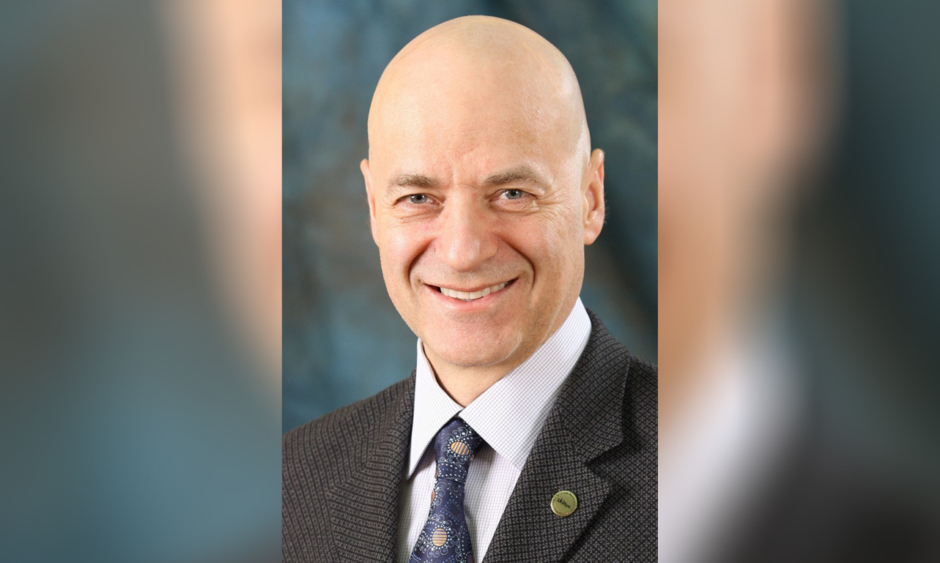Dr George Hruza, President of the American Academy of Dermatology (AAD), Chesterfield, Missouri, USA
![]()
Interviewed by Rachel Donnison | Editorial Assistant, EMG-Health
![]()
President of the American Academy of Dermatology (AAD) Dr George Hruza grew up in Czechoslovakia, escaped to Sweden, and finally settled in the USA. An inspirational story, Dr Hruza spoke to us about his childhood, empowering change within the healthcare landscape, and his legacy for future Presidents of the AAD.
Q: To begin, could you tell us a little bit about your childhood? You have previously spoken about your mother’s experiences having served as a great inspiration to you throughout your life. What other aspects of your upbringing have influenced you in adulthood, and what challenging situations have you faced when you have had to draw upon this inspiration?
A: I grew up in totalitarian socialist Czechoslovakia. Growing up there, I saw first-hand how it stifled freedom and engendered constant fear. There are a few occurrences that are still very vivid in my mind, including the times when our mail had been opened and read by the secret police and when our telephone was monitored. My mother was reported by a colleague for consorting with the enemy by communicating with friends in the West, which resulted in her losing her prominent university position in paediatrics. She was later assigned to work in a clinic in the outlying suburbs. The healthcare system, as all of the economy, was run by the government resulting in rationing of care so that my uncle, a prominent attorney, died of renal failure at the age of 52 because the bureaucrats decreed that renal dialysis was to be given only up until the age of 50.
I was fortunate that my parents had the foresight and ingenuity to engineer our escape from this environment to give their children, my sister and me, the opportunity for a better life. After a three-and-a-half-year stay in Sweden, even better for us, we settled in the USA, a country of immigrants. Only in the USA can an immigrant achieve not just a successful dermatology career, but rise to the position of president of the premier professional society of dermatology, the American Academy of Dermatology (AAD).
My parents taught me that anything one sets their mind to is doable, even if it is very difficult like escaping from a totalitarian regime. They encouraged me to take advantage of opportunities as they present themselves and, even better, create your own opportunities. “Be the master of your destiny,” they’d say. The USA is a true land of opportunity and I feel very fortunate to have been able to achieve the ‘American dream’.
This can-do, problem-solving, positive attitude has served me well in some of the challenges faced in my practice. For example, there was a time our telephone service provider went out of business and we were at risk of losing the practice phone number. I can’t forget about when my practice underwent a ransomware attack, or the time when our brand-new medical office was flooded by a faulty eyewash station. Personnel issues come to mind, too. In fact, my office manager and three of my clinical staff quit in 1 week, and my histotechnician was out of the office for medical issues for weeks (this happened more than once). In each of those instances, I was able to develop a solid plan of action, execute the plan, and overcome the challenge.
Q: What is the most rewarding aspect of your job as a dermatologist?
A: I specialise in skin cancer surgery. The most challenging situations tend to happen with patients who may have conditions such as difficult skin cancers. Having a patient come to me with a skin cancer, often very anxious, is a daunting reality for any oncologist. For me, knowing that I can remove their skin cancer with a 99% cure rate and reconstruct the resulting defect so that the patient has minimal scarring and minimal pain (using painless anaesthesia) gives me great job satisfaction. The best reward is when I get a “thank you” from an appreciative patient, or even better, a heartfelt hug. I live for those moments and I still love going to work after 30 years in practice.
Q: You have trained 21 Mohs surgery fellows. What is the most important lesson you aim to teach them as they begin their careers?
A: It’s about the patient. If you take great compassionate care of your patients, the rest will follow. Always think of the patient first. For example, there may be various options for repairing a defect, some complicated and involved, some simple and easy to execute, some easy on the patient, others hard on the patient. Always go with the simplest reconstruction that will get the job done with minimal patient morbidity. Each patient is unique and should be treated individually. Avoid a cookie-cutter approach to patient care.
Q: You have said that your focus as President of AAD is to empower members to view change within the healthcare landscape; how are you hoping to achieve this?
A: The Academy’s membership has shifted significantly over the years, which is largely a reflection of how the specialty has changed. The AAD must evolve with the times. Shifts in the healthcare space challenge the Academy to be nimble, flexible, and ready to adapt. Members need a relevant and a modernised organisation they can count on as medicine transforms over time. Together, we evolve dermatology. Of all the things we have accomplished this year, I am most proud of the steps we’ve taken to modernise our Academy. We did many more things over this past year to prepare the Academy for the future. My main priority as AAD President was to continue the important work of the Academy’s strategic plan. It’s agile and moves the needle on transforming our organisation to one that is future focussed in all facets from education to innovation, to the way we advocate for members and our patients.
On the advocacy front, we have been fighting to preserve patient access to buffered lidocaine, which is under real threat of not being available once the United States Pharmacopeia (USP) Chapter 797 revision goes into effect. The AAD, along with our sister societies, are working hard on the first ever USP ‘monograph,’ which would exempt buffered lidocaine from onerous preparation requirements. We’ve passed some initial testing and are working on additional testing that USP requires before approving the monograph.
Q: This year would have been the 78th Annual Meeting of the AAD; why do you think this congress has been so successful?
A: The meeting is so strong because our members are profoundly intelligent and motivated to come and learn and share. For more than 80 years, the AAD Annual Meeting has provided members with stimulating lectures on myriad topics. Members have access to hot topic content ranging from medical, paediatric, and surgical dermatology. I think, year after year, members are intrigued by the late-breaking advances and scientific research that they can apply in practice to improve outcomes for patients.
Every year, members are excited by some of the new curriculum built into Annual Meeting sessions. Notably, hands-on sessions, patient simulation assessments, and audience participation sessions that include opportunities for question and answer, all offering either Continuing Medical Education (CME) and Maintenance of Certification (MOC) credit, inspire members to take control of their learning in an environment where they can deeply engage with the content.
Q: AAD has supported many charitable schemes, such as the SPOTme Skin Cancer Screening Program and Camp Discovery. Could you tell us about other charitable projects that are expected to launch in 2020?
A: Let me take this opportunity to highlight the AAD’s Shade Structure Grant Program. Research shows that it only takes one blistering sunburn during childhood or adolescence to nearly double a person’s risk of developing melanoma later in life. Hence, the Academy created the Shade Structure Grant Program for qualifying schools and community nonprofits that are seeking to install shade over outdoor areas where children play and learn. I attended two dedication ceremonies in Missouri, where I practice. These two shade structures, made possible by the important work of the AAD, protect more than 12,000 students from the sun’s harmful ultraviolet rays annually.
In 2020, the AAD is funding the largest structure to date in St. Petersburg, Florida. It is estimated that more than 900 people are diagnosed with skin cancer every day, and nearly 20 Americans die from melanoma every day. In Florida alone, it is estimated that there will be 8,750 new cases of melanoma this year.
Also coming down the pipeline in 2020 is the installation of a large shade structure at the Indianapolis Zoo, an effort made possible due to AAD partnerships with a number of individuals and organisations including the Indiana Academy of Dermatology (IAD).
Q: Patient Care Heroes is a scheme created by AAD; what do you believe to be the benefits of championing physicians’ successes this way?
A: The AAD honours ‘patient care heroes’ as part of its SkinSerious® campaign. Launched 3 years ago, the campaign educates key stakeholders, specifically policymakers and other specialty physicians, about dermatologists’ integral role in treating serious diseases and collaborating with other specialists to transform patients’ lives.
Q: What sort of legacy would you like to leave for future Presidents of the AAD following you?
A: We have an incredibly strong organisation with a dedicated professional staff and committed member volunteers. Use them wisely and listen to their counsel. They will very often have better insight into issues and, together, you will be able to come up with optimal solutions that best serve member and patient needs. I advise my successors to take any action or make a decision through the lens of the Academy, acknowledging how it aligns with the strategic plan and the impact it has on patients and members. When viewed through that lens, seemingly challenging decisions become easy. Always look for consensus, unification, and inclusivity – that is the culture of the Academy and that is why we have been so successful.
We have recruited a new CEO, Elizabeth Usher, who is already showing herself to be a great part of the Academy’s leadership team. I have devoted a lot of my tenure to improving the Academy’s operations through the programme assessment work group and through a thorough review and streamlining of all our policies and procedures. The outcome of this effort that we hope for is to have an Academy that is focussed on our strategic mission, nimble in execution, transparent, and responsive to our members and patients, including those of underserved populations.








